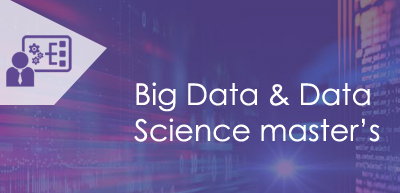<
Artificial Intelligence Course in Jersey City, NJ
Flexible Schedule
48 Hrs Project Work & Exercises
32 Hrs Instructor Led online Training
24 Hrs Self-paced Videos
24X7 Support
Certification and Job Assistance
Enquire Now
Overview
- The building blocks of Deep Learning
- Various types of neural networks
- Using backpropagation for training networks
- Introducing the TensorFlow for computation
- Recurrent and convolutional neural network
- Python scripting in machine learning
- Real world applications of Artificial Intelligence.
- Professionals in analytics, data science domains, ecommerce, search engine domains
- Software professionals looking for a career switch and fresh graduates.
Here are a few reasons why Artificial Intelligence is a great career option:
- There are over 35,000 job opportunities available for AI professionals in the United States alone – LinkedIn
- AI Engineers earn over US$114k per annum in the United States – Glassdoor
This will help you build a solid AI career and get the best artificial intelligence engineer positions in leading organizations.
What you will gain?
- 1 to 1 Live Online Training
- Dedicated 24 x 7 Support
- Flexible Class Timing
- Training Completion Certification
- Direct Access to the Trainer
- Lifetime Access of an LMS
- Real-time Projects
- Dedicated Placement Support
Fees
Self Paced Training
16,010
Online Live One to One Training
19,890
Course Content
- 1.1 Field of machine learning, its impact on the field of artificial intelligence
- 1.2 The benefits of machine learning w.r.t. Traditional methodologies
- 1.3 Deep learning introduction and how it is different from all other machine learning methods
- 1.4 Classification and regression in supervised learning
- 1.5 Clustering and association in unsupervised learning, algorithms that are used in these categories
- 1.6 Introduction to ai and neural networks
- 1.7 Machine learning concepts
- 1.8 Supervised learning with neural networks
- 1.9 Fundamentals of statistics, hypothesis testing, probability distributions, and hidden markov models.
- 2.1 Multi-layer network introduction, regularization, deep neural networks
- 2.2 Multi-layer perceptron
- 2.3 Overfitting and capacity
- 2.4 Neural network hyperparameters, logic gates
- 2.5 Different activation functions used in neural networks, including relu, softmax, sigmoid and hyperbolic functions
- 2.6 Back propagation, forward propagation, convergence, hyperparameters, and overfitting.
- 3.1 Various methods that are used to train artificial neural networks
- 3.2 Perceptron learning rule, gradient descent rule, tuning the learning rate, regularization techniques, optimization techniques
- 3.3 Stochastic process, vanishing gradients, transfer learning, regression techniques,
- 3.4 Lasso l1 and ridge l2, unsupervised pre-training, xavier initialization.
- 4.1 Understanding how deep learning works
- 4.2 Activation functions, illustrating perceptron, perceptron training
- 4.3 multi-layer perceptron, key parameters of perceptron;
- 4.4 Tensorflow introduction and its open-source software library that is used to design, create and train
- 4.5 Deep learning models followed by google’s tensor processing unit (tpu) programmable ai
- 4.6 Python libraries in tensorflow, code basics, variables, constants, placeholders
- 4.7 Graph visualization, use-case implementation, keras, and more.
- 5.1 Keras high-level neural network for working on top of tensorflow
- 5.2 Defining complex multi-output models
- 5.3 Composing models using keras
- 5.3 Sequential and functional composition, batch normalization
- 5.4 Deploying keras with tensorboard, and neural network training process customization.
- 6.1 Using tflearn api to implement neural networks
- 6.2 Defining and composing models, and deploying tensorboard
- 7.1 Mapping the human mind with deep neural networks (dnns)
- 7.2 Several building blocks of artificial neural networks (anns)
- 7.3 The architecture of dnn and its building blocks
- 7.4 Reinforcement learning in dnn concepts, various parameters, layers, and optimization algorithms in dnn, and activation functions.
- 8.1 What is a convolutional neural network?
- 8.2 Understanding the architecture and use-cases of cnn
- 8.3‘What is a pooling layer?’ how to visualize using cnn
- 8.4 How to fine-tune a convolutional neural network
- 8.5 What is transfer learning?
- 8.6 Understanding recurrent neural networks, kernel filter, feature maps, and pooling, and deploying convolutional neural networks in tensorflow.
- 9.1 Introduction to the rnn model
- 9.2 Use cases of rnn, modeling sequences
- 9.3 Rnns with back propagation
- 9.4 Long short-term memory (lstm)
- 9.5 Recursive neural tensor network theory, the basic rnn cell, unfolded rnn, dynamic rnn
- 9.6 Time-series predictions.
- 10.1 Gpu’s introduction, ‘how are they different from cpus?,’ the significance of gpus
- 10.2 Deep learning networks, forward pass and backward pass training techniques
- 10.3 Gpu constituent with simpler core and concurrent hardware
- 11.1 Introduction rbm and autoencoders
- 11.2 Deploying rbm for deep neural networks, using rbm for collaborative filtering
- 11.3 Autoencoders features and applications of autoencoders.
- 12.1 Image processing
- 12.2 Natural language processing (nlp) – Speech recognition, and video analytics.
- 13.1 Automated conversation bots leveraging any of the following descriptive techniques: Ibm watson, Microsoft’s luis, Open–closed domain bots,
- 13.2 Generative model, and the sequence to sequence model (lstm).
Benefits of Online Training
- 100% Satisfaction Ratio
- Dedicated Help In Global Examination
- Updated Syllabus & On-Demand Doubt Session
- Special Group & Corporate Discounts

FAQ’s
You would be glad to know that you can contact ZebLearn support even after the completion of the training. We also do not put a limit on the number of tickets you can raise for query resolution and doubt clearance.
You will work on highly exciting projects in the domains of high technology, ecommerce, marketing, sales, networking, banking, insurance, etc. After completing the projects successfully, your skills will be equal to 6 months of rigorous industry experience.
Job Opportunities
According to Gartner, AI is heralded to create 2.3 million jobs by the end of 2020, leading a net gain of 500,000 potentially new jobs. And in the light of COVID-19 crisis, job opportunities for AI workers are bound to see a sharp rise.
The global economic status is not the same, but AI talents can remain positive.
According to International Data Corporation (IDC), the number of AI jobs is expected to globally grow 16 percent this year.
Gartner’s report also mentions 85 percent of AI professionals believe the industry has become more diversified in recent years.
Placement Partner



